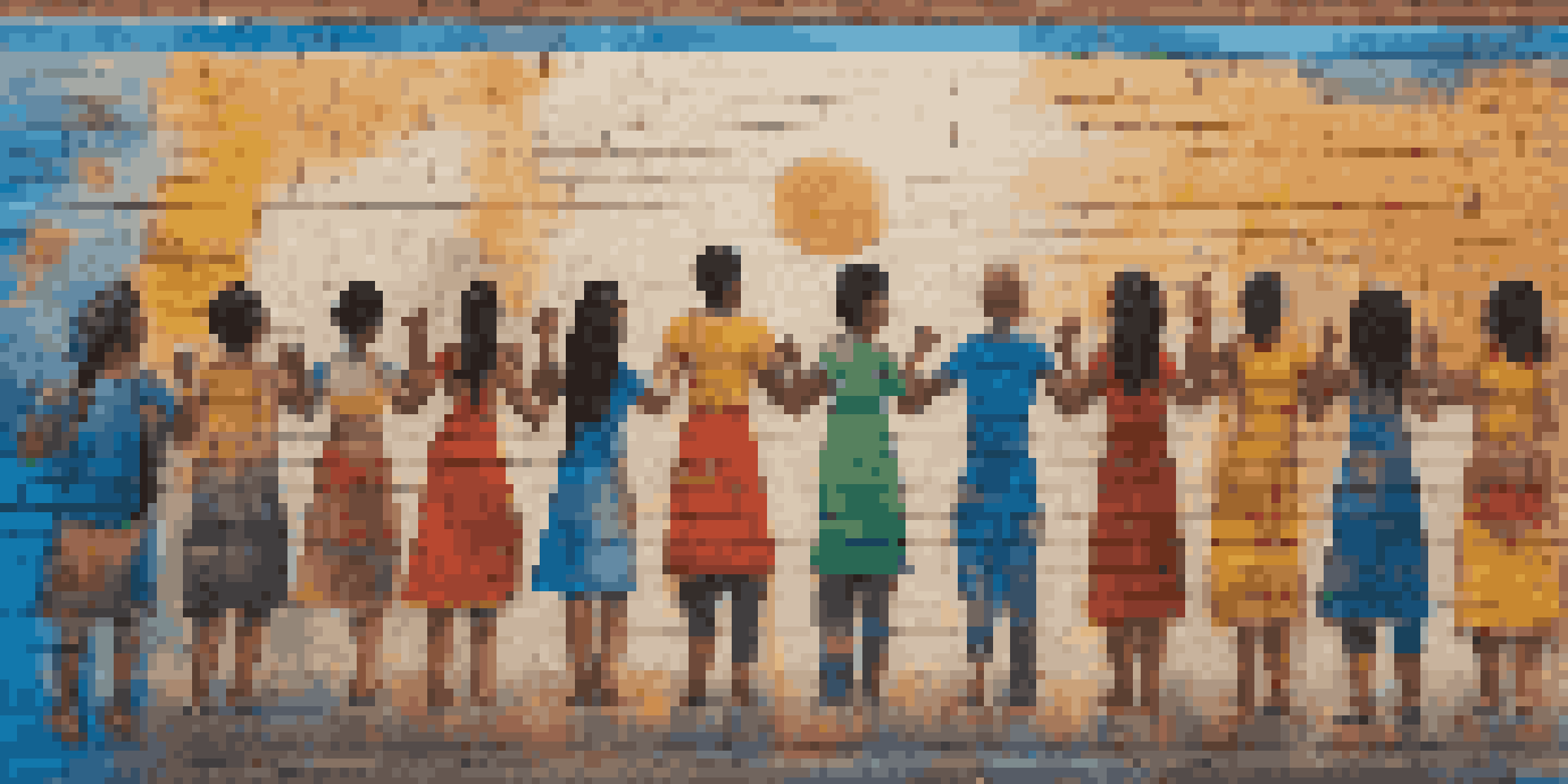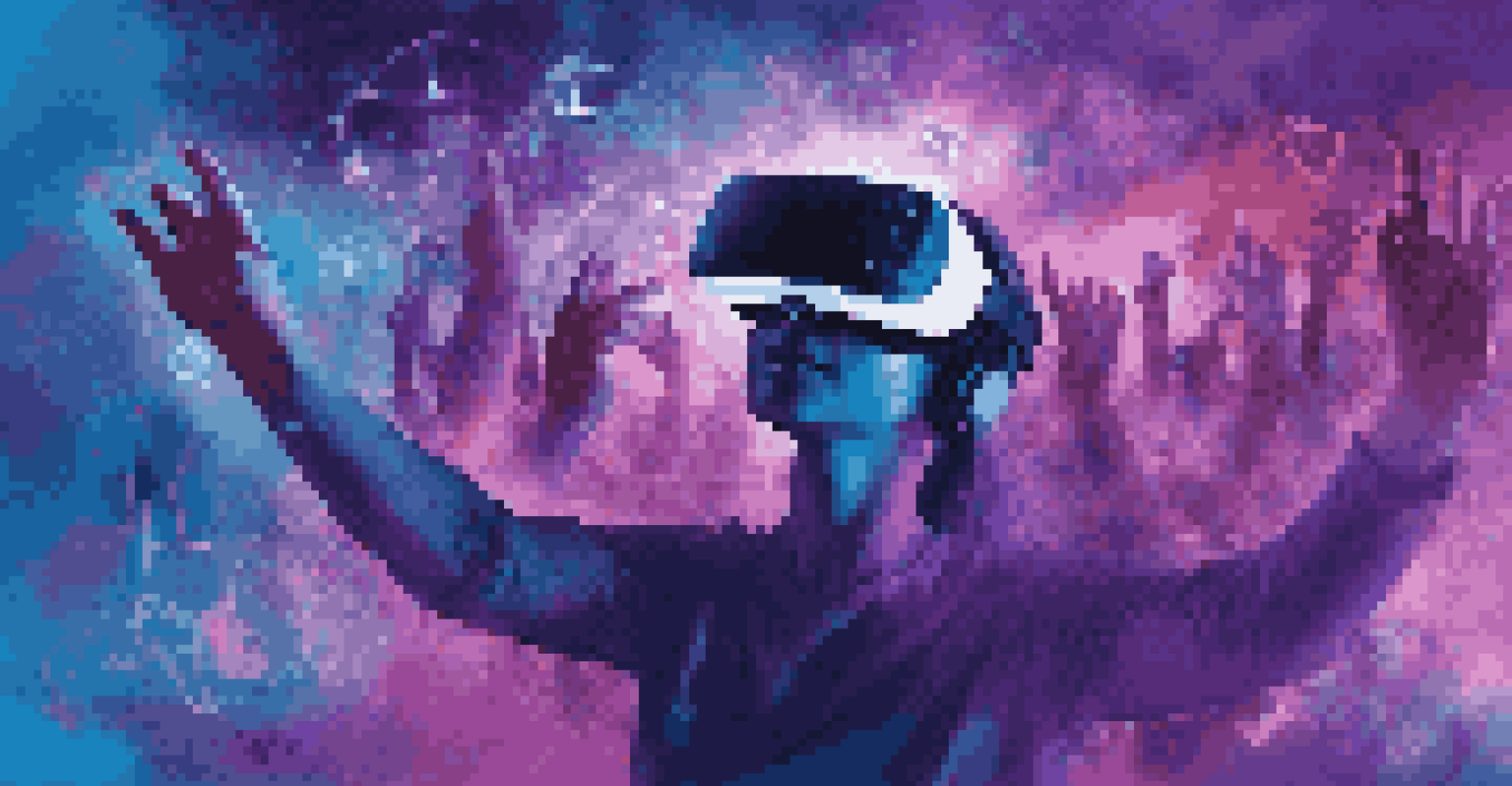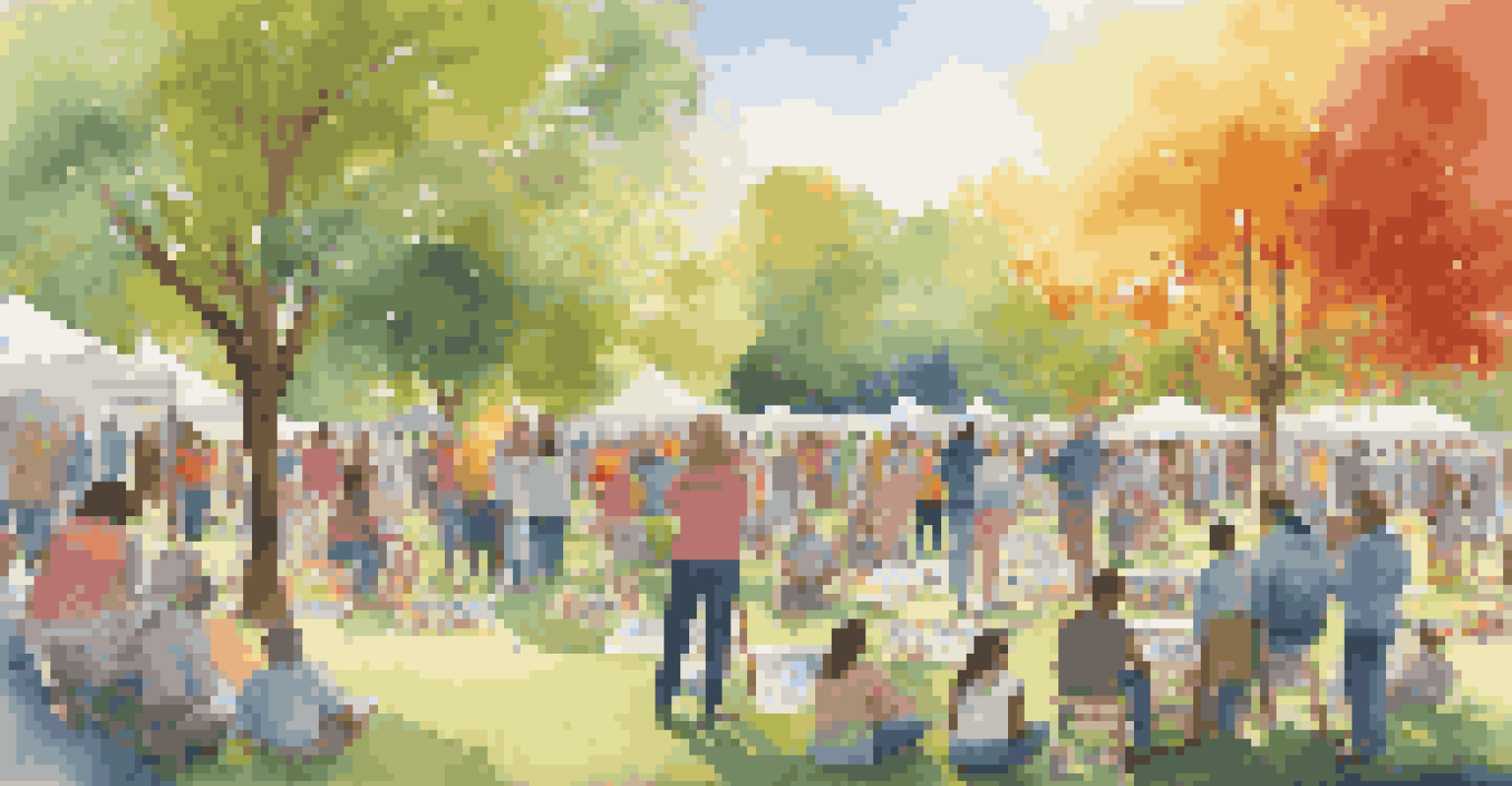Art and Digital Activism: Bridging Cultural Gaps

Understanding Digital Activism in the Modern Era
Digital activism refers to the use of online platforms to promote social change. In today's interconnected world, it's a powerful tool for raising awareness and mobilizing support for various causes. Social media, websites, and digital art are just a few ways activists reach a global audience, breaking traditional barriers.
Art is not a mirror held up to reality, but a hammer with which to shape it.
The rise of digital activism has transformed how movements operate, allowing for real-time communication and coordination. For instance, hashtags like #BlackLivesMatter have sparked conversations worldwide, highlighting systemic issues in various societies. This instant access to information can amplify voices that might otherwise go unheard.
As we navigate this digital landscape, it's essential to recognize the role of art in these movements. Art has always served as a medium for expression, and when combined with digital activism, it can create powerful narratives that resonate across cultures and communities.
The Role of Art in Activism: A Historical Perspective
Art has been a vehicle for activism for centuries, serving as a reflection of societal issues. From the murals of the Mexican Revolution to the protest songs of the 1960s, artists have used their talents to challenge the status quo. This tradition continues today, as artists find new ways to engage with social and political issues through digital platforms.

One striking example is the use of street art in protests, where visual messages can quickly capture public attention. Artists like Banksy have gained international acclaim for their thought-provoking pieces that address everything from war to consumerism. These artworks often transcend language barriers, making a universal impact.
Digital Activism Amplifies Voices
Digital platforms enable activists to raise awareness and mobilize support for social causes effectively.
By blending art with activism, artists contribute to a rich cultural dialogue that encourages empathy and understanding. This historical perspective highlights the ongoing evolution of art as a tool for social justice, particularly in the digital age where barriers to sharing art are lower than ever.
How Digital Art Bridges Cultural Divides
Digital art has a unique ability to transcend geographical and cultural boundaries. With just a click, an artwork can be shared globally, allowing diverse audiences to engage with different perspectives. This accessibility fosters a sense of community among individuals who might not otherwise connect.
In a time of deceit telling the truth is a revolutionary act.
For example, platforms like Instagram and TikTok have become spaces where artists showcase their work while addressing cultural issues. Artists from various backgrounds can share their stories and experiences, inviting dialogue and collaboration. This blending of voices not only enriches the digital space but also promotes cultural exchange.
As digital art continues to evolve, it plays an increasingly vital role in bridging gaps between cultures. By highlighting shared experiences, it encourages a collective understanding, ultimately driving social change on a broader scale.
Case Studies: Successful Art-Driven Activism
Several campaigns have effectively combined art and digital activism to create waves of change. One notable example is the 'Fearless Girl' statue in New York City, which symbolizes female empowerment and challenges gender inequality. This artwork quickly became a social media sensation, sparking discussions on women's rights and representation in leadership roles.
Another example is the 'Art for Black Lives' initiative, where artists create pieces to raise funds for social justice organizations. By leveraging online auctions and social media promotion, this movement showcases the power of art in mobilizing support for critical causes. These case studies illustrate how art can ignite a movement and inspire action.
Art Enhances Activism's Impact
The blending of art and activism creates powerful narratives that resonate with diverse audiences and foster empathy.
Such successful examples demonstrate the potential of art not just to raise awareness but also to generate tangible results. By engaging audiences emotionally and intellectually, these art-driven campaigns can spur individuals to take action, amplifying their impact.
Challenges Facing Art and Digital Activism
Despite the potential benefits, art and digital activism face several challenges. One significant issue is the risk of oversaturation; with countless voices vying for attention online, it can be difficult for impactful messages to stand out. Artists must navigate this crowded landscape to ensure their work resonates with audiences.
Moreover, the commercialization of art can dilute its activist message. When art becomes commodified, it risks losing its power to provoke thought and inspire change. This tension between artistic integrity and marketability is a constant struggle for many creators in the digital space.
Finally, there's the challenge of ensuring inclusivity within the digital activism landscape. It's crucial that diverse voices are represented and heard, as this enriches the conversation and fosters a more comprehensive understanding of issues. Addressing these challenges is vital for the future of art and activism.
The Future of Art and Digital Activism
As technology continues to advance, the intersection of art and digital activism will likely evolve. Virtual reality, augmented reality, and artificial intelligence are just a few tools that could reshape how artists engage with audiences. These technologies offer new avenues for immersive storytelling and interactive experiences, making activism feel more personal and immediate.
For example, virtual reality experiences can transport users to the frontlines of social justice issues, fostering empathy and a deeper understanding of others' experiences. This could lead to a more engaged and informed audience, ultimately driving action.
Challenges in Digital Activism
Oversaturation, commercialization, and the need for inclusivity are significant challenges that art and digital activism face.
Looking ahead, it's essential for artists and activists to collaborate and innovate in response to emerging technologies. By doing so, they can ensure their messages remain relevant and impactful in an ever-changing digital landscape.
Getting Involved: How You Can Support Art and Activism
Supporting art and digital activism doesn't require a huge platform or following. Everyone can contribute in small but meaningful ways, such as sharing artists' work on social media or engaging with local art initiatives. Even a simple retweet can amplify crucial messages and support artists in their activism.
Consider attending local art exhibitions or online events that focus on social justice themes. These spaces often serve as platforms for dialogue and can help you connect with like-minded individuals who share your passion for change. Community engagement is a powerful way to support both art and activism.

Lastly, don't hesitate to create your own art or digital content that speaks to issues you care about. Your voice matters, and by expressing your thoughts and feelings through art, you can contribute to the larger conversation. Remember, every small action can lead to significant change.